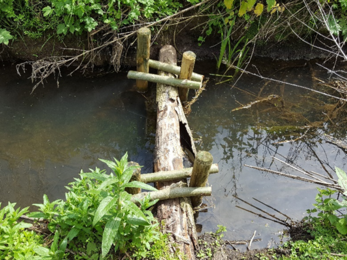River Blyth restoration update
The first stage of the project, completed in October 2019, saw a 900m section of the river improved with 43 log jams and flow deflectors, which will help vary the flow, reduce sedimentation and provide habitat for fish, invertebrates and flora. Further upstream, nine leaky log jams were installed to help slow the flow during heavy rain and flood storage was increased through the creation of a flood attenuation pond, installed by a local land-owner.
During heavy rainfall the tributaries of the River Blyth and other rivers in Suffolk become inundated, leading to problems like bank erosion. Leaky log jams are designed to hold back some of the water, but they are ‘leaky’, so water is still able to flow downstream. When combined with other natural flood management options, like attenuation ponds, leaky log jams can significantly reduce the energy of the water downstream and they also help to trap sediment washed in from nearby land.
The river restoration work on the Blyth will continue over the winter with riverside tree planting. The occasional riverside tree will provide shelter for fish and create shade to help regulate water temperatures and control the growth of in-channel vegetation. A team of volunteer River Wardens will help with the planting, as well as conducting regular monitoring of the river.
If you have any questions about the project or would like to get involved, please contact Alice Wickman, River Blyth Catchment Advisor at Suffolk Wildlife Trust.
Phone: 07826897009 Email: Alice.wickman@suffolkwildlifetrust.org.




